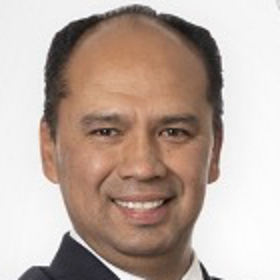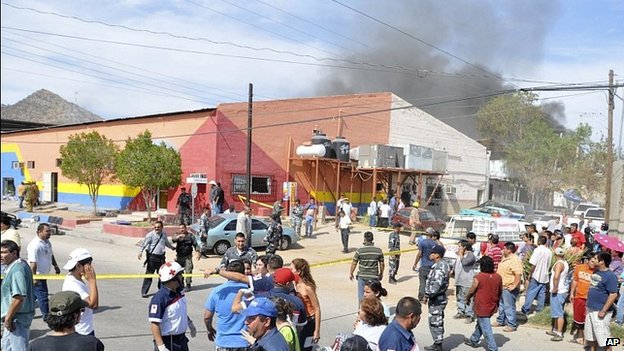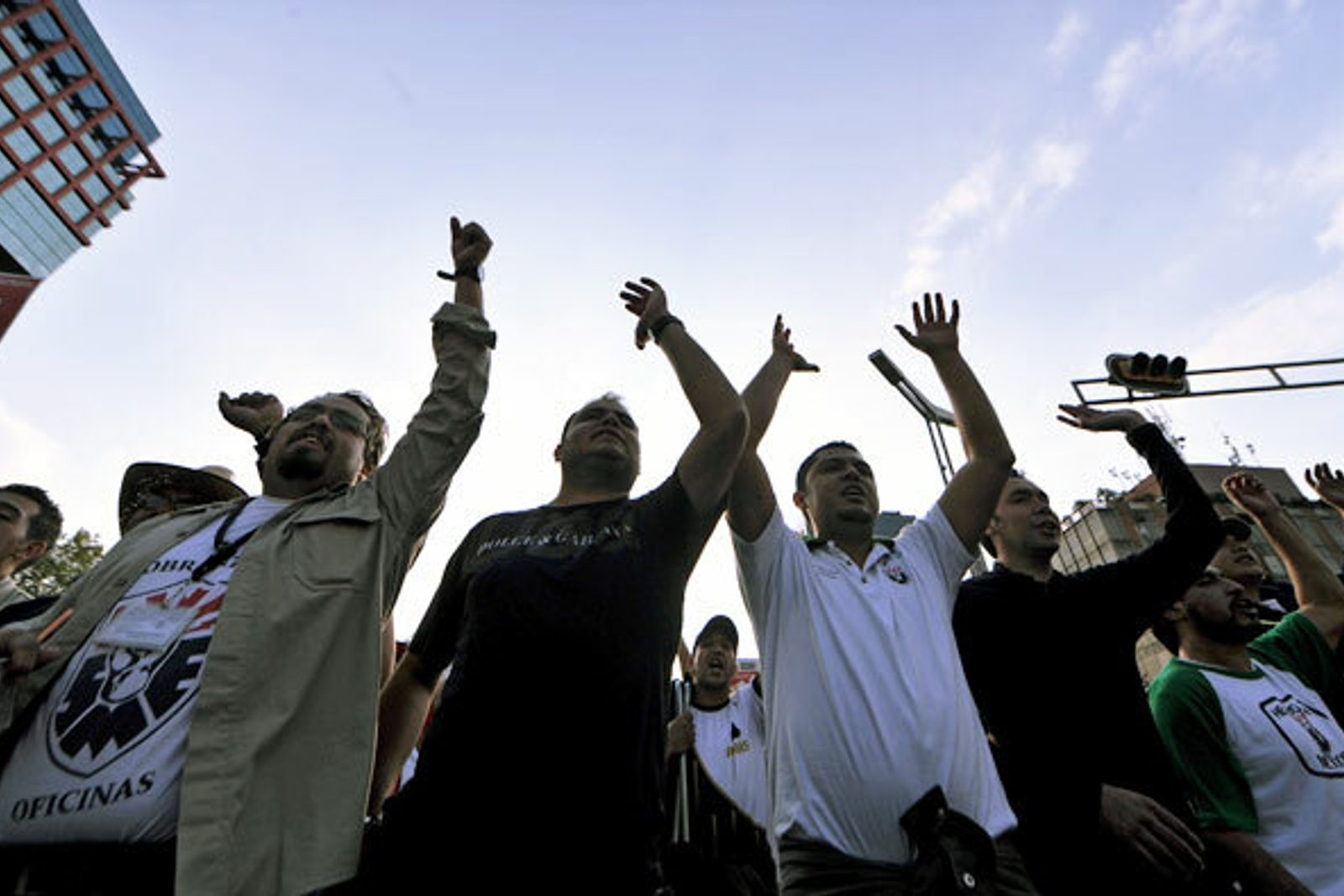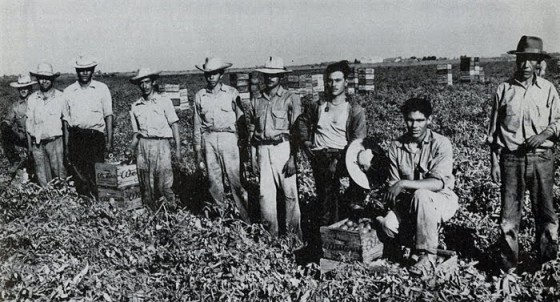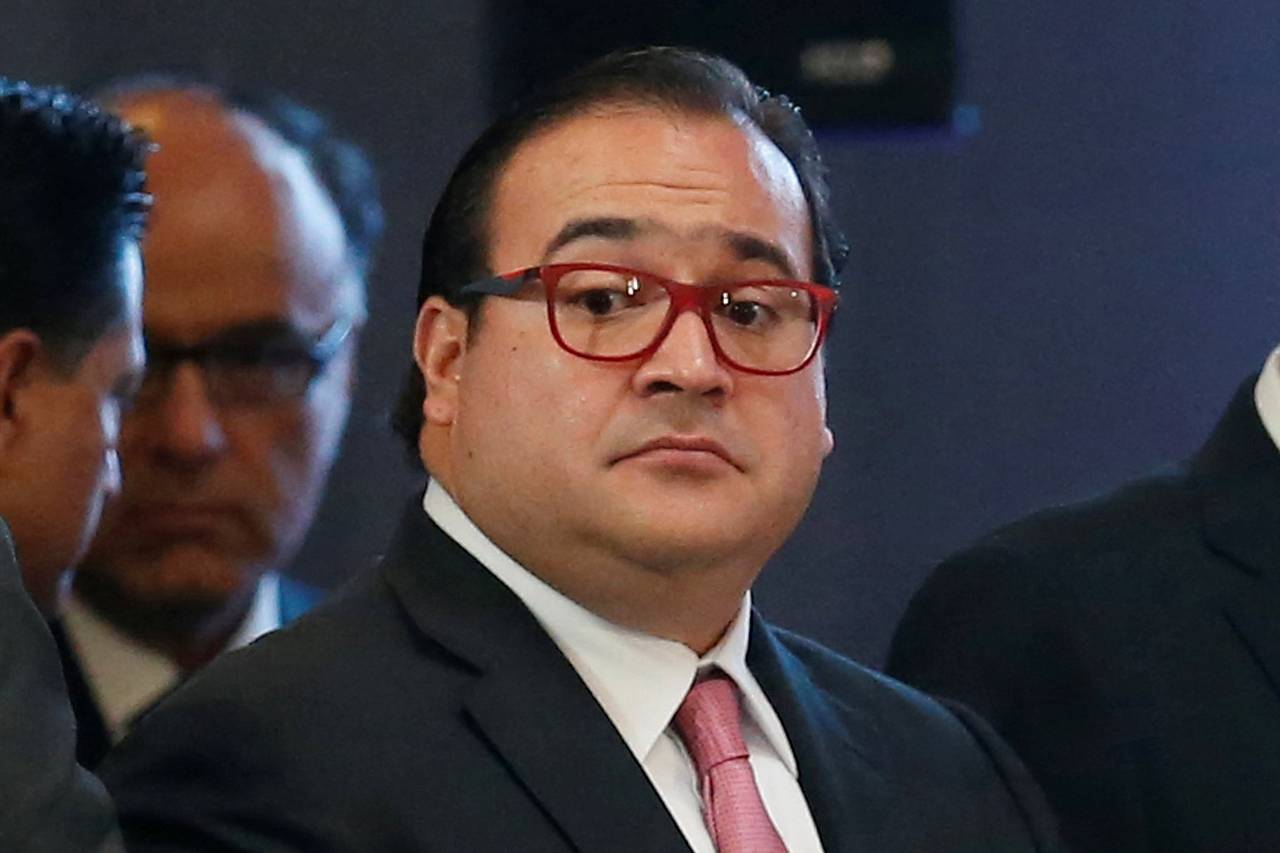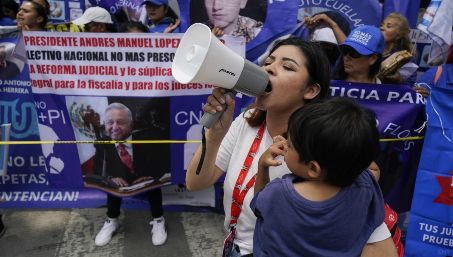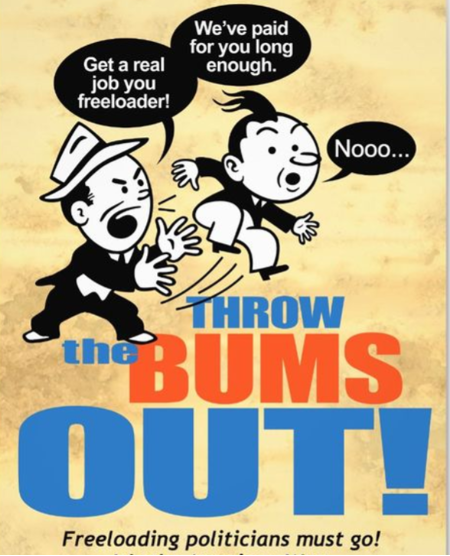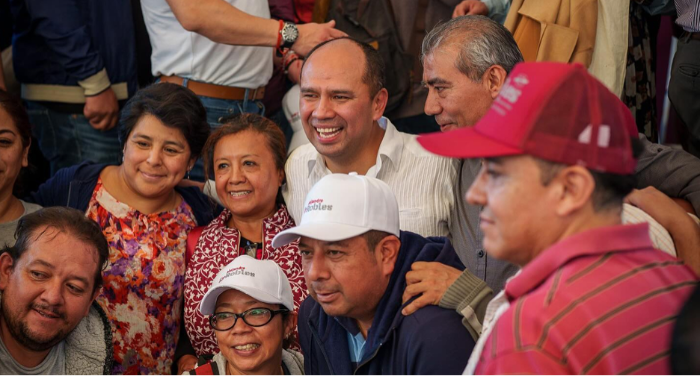|
|
The weekly newsletter of the Mexico Solidarity Project |
|
Every issue archived online at mexicosolidarityproject.org/archives/ |
|
June 04, 2025 |
|
|
|
Justice Served: “Throw the Bums Out!” |
|
Meizhu Lui, for the editorial team |
|
|
In an unprecedented reform of Mexico’s judiciary, on June 1, Mexico’s judges will be elected by the people.
Many questions have been raised, especially in the US media, about whether this kind of election will succeed practically and whether Mexico’s democracy will really be strengthened. With 60 candidates running for nine positions on the Supreme Court, how will people know all of them well enough to make informed decisions? And not only those 60 — they’ll be choosing many lower-level federal judges. That’s enough names on the ballot to make anyone’s head spin.
Regardless, the answer is a resounding yes! to the question of whether this election will succeed. Why? Because this election will throw the bums out!
As former Congressperson Alejandro Morales tells us today, for far too long, judges at every level have ruled for the rich and against the poor. Equal protection under the law is a bedrock democratic principle. The entrenched bias and corruption of the courts have made the majority of Mexicans lose faith in government, lose faith that justice for workers and poor people could ever be possible, and lose faith in democracy.
Even if only a million people vote, that’s 999,999 more people than the single vote of the president. No one doubts that past PRI presidents chose judges to serve their own personal and political self-interest. You’d get a fairer Supreme Court picking names out of a hat.
Yes, this first-time election of judges will be messy, and we’ll hear howls of protest from the elites arguing that it wasn’t “democratic.” But democracy is not a destination; it’s a journey with twists and turns. Mexico’s people are willing to try a brand-new route. For the first time in decades, they have hope that this will get them a little farther along their path toward democracy and justice. |
|
|
Judging the Judges: A New Democracy |
|
|
The municipality of Coyoacán in Mexico City is Alejandro Robles Gómez’s home base, but he has lived for some time in Canada. His activist roots go back to the student strikes at UNAM (National Autonomous University of Mexico) in 1999/2000. In 2006, he began his political service as a national Congressperson. He served again in 2021-2024 as a Morena representative. He is now Secretary of the Executive National Committee for Mexicans Abroad. |
|
AMLO was elected in large part because he promised to root out corruption in government. Was there corruption or bias in the judiciary?
We have a long history of judicial corruption and of bias toward moneyed interests and political figures.
For example, in 2009, a horrific fire in the city of Hermosillo at Guardaría ABC, or ABC Daycare, took the lives of 49 toddlers and injured 100 more. |
|
The building had passed inspection just weeks before, despite faulty installation of sprinklers and several other safety hazards. But the courts held no government officials responsible. The parents got no justice. |
|
|
Parents saw smoke billowing from the nursery and rushed to the scene. |
|
|
Workers protest the closure of the state-run power company in 2010. Photo: Alfredo Estrella/AFP/Getty Images |
|
Workers rights, guaranteed by the Mexican constitution, were trampled. The neoliberal president Felipe Calderon ordered the public electric company, Luz y Fuerza, to be closed and electric services privatized. The company illegally threw 44,000 workers out into the streets without notice. The courts did nothing, and the Electrical Workers’ Union is still fighting the case, almost 20 years later. |
|
The Supreme Court also helped the government defraud poor migrant farmworkers. From 1942 to 1964, the Mexican government withheld 10% of the braceros’ wages, supposedly as a savings fund. Neither the workers nor their families ever saw that money again. |
|
|
Bracero guest workers, unpaid |
|
Finally, in 2018, a Supreme Court decision compensated each bracero 38,000 pesos, although the accounting reports said at least 1 million pesos were due to them.
But the courts have taken good care of government criminals. We all know about Genaro García Luna, the national Secretary of Public Security under president Felipe Calderón, who has been convicted in a US court of drug trafficking and working hand in hand with the Sinaloa cartel. The fox guarding the hen house! He helped cover up evidence in the case of the 43 Ayotzinapa teacher college students who were disappeared.
Just this week, a Florida court ordered him and his wife to pay over 2 billion dollars — billion! — to the Mexican government for defrauding Mexican taxpayers. But the Mexican Supreme Court the very next day unfroze their assets so that they could access the money, perhaps for their defense. The Court aids this convicted criminal because he’s one of their own. |
|
|
2015: Veracruz Gov. Javier Duarte dismissed corruption accusations against him as ‘pure show.’ Photo: Reuters |
|
At the state level, the corruption is even worse, if that’s possible! While the Supreme Court has a huge budget, provincial courts do not. Nepotism permeates their offices. |
|
|
Genaro García Luna awaits trial in a New York prison, 2019 |
|
One year ago, the people overwhelmingly voted for the Fourth Transformation project, known as Plan C. This plan included eliminating the current Supreme Court and introducing popular elections for all judges. |
|
|
Relatives of prisoners rally in favor of judicial reform, Sept 4, 2024: Felix Marquez: AP Photo |
|
|
poster by funnybowlingshirts |
|
Will people participate? As we know, many people don’t vote. In a presidential election, you might get at most 60% of voters; in midterms, maybe 30%. This election is a new, unprecedented process, and it doesn’t occur at the same time as either the presidential or midterm elections. If we get 15 to 20% of voters, we’ll feel we’ve succeeded.
How did the candidates campaign? They weren’t allowed any conventional, expensive campaigning, with billboards or TV advertisements. They only used flyers and social media. We believe a democracy must have a true separation between economic and political power. It should not be that the one who spends the most, wins. |
|
Political power should not be bought and sold. The slogan of our movement is “For the good of all, but first the poor.” In the US, Trump’s administration says, “For the good of some, but first Elon Musk!”
Why does the US say these elections show that Mexico is moving toward authoritarianism?
In the past, Mexican courts were run like businesses. Whoever paid more had more access to “justice.” So judges that can’t be bought are a threat to powerful interests, particularly private North American interests that hold significant influence in Mexico.
In the meantime, our jails are full of the poor, as well as Blacks, migrants and Indigenous people. That must end. One step is to eliminate private, for-profit jails. Who owned most of those in Mexico? García Luna!
In the US, many migrants suffer in private, overcrowded detention centers with minimal health services. Now, Bukele in El Salvador is building prisons for deported persons and getting lots of US money to do so. Trump’s deportation regime is a form of human trafficking! Humans are a commodity that brings handsome profits to the few.
It’s not easy to overturn a corrupt system that has been in place for nearly a century. Can Mexico become a more democratic country?
Our people are awakening to a desire for democracy — but not in the US paradigm. In US democracy, the people’s interests are subordinated to those of the oligarchy. Another democracy is necessary! |
|
|
Alejandro Robles Gómez |
|
In Mexico, people have the power now to choose their judges, judges for whom justice means more than just applying laws. Justice can be built on compassion, respect, and love. |
|
|
|
|
Cut and Run Garments |
|
|
Jeffery Hermanson began his career with the International Ladies Garment Workers Union (ILGWU) during the late 1970s. He traced the migration of the textile industry after the passage of NAFTA to Mexico and elsewhere, which led him to a lifetime of organizing workers across national boundaries. He has lived primarily in Mexico since 2019, when the AFL-CIO Solidarity Center appointed him Director of Organizing in Mexico. He retired in 2022. The following piece has been excerpted from his interview with Andrew Ekrod and edited for length and clarity. The complete interview can be read at https://www.phenomenalworld.org/interviews/jeff-hermanson/. |
|
The United States-Mexico-Canada Agreement, or USMCA, the trade agreement that followed NAFTA, will be renegotiated in 2026. To help us understand the issues at stake, we are printing part of Jeffrey Hermanson’s interview explaining the history of free trade and the maquiladoras. [ed.]
Maquila means mill, and maquiladoras were factories built in the 1980s near the Mexico-US border, with the companies’ most labor-intensive work subcontracted to them. The US shipped unfinished goods across the border; the products were finished in Mexico and then shipped back to be sold.
These enterprises became large, well-capitalized factories in the early years of NAFTA, and workers from all over Mexico came for the jobs and settled into poor communities they built themselves.
A few years after NAFTA was passed in 1994, I visited one of these “free trade zones,” or industrial park areas, and saw terribly poor conditions, with wages insufficient for supporting human life. Workers built houses out of pallets. There was even a song, “Techos de Carton,” about Mexicans living in cardboard shacks. They got their electricity from homemade attachments to overhead electricity lines with wires all over the ground running into the houses. The dirt streets turned to mud when it rained.
Manufacturers were encouraged to move to Mexico due to a particular tax arrangement, put in place by neoliberal politicians, that attracted direct foreign investment. Investors were offered lighter taxation and special deals with local authorities for land and other utilities, especially water. Before AMLO's government in 2018, foreign companies often got free land and paid no taxes on land or buildings for ten years, robbing local communities of needed resources.
But what we call runaway shops had developed well before NAFTA. During the 50s and 60s, employers were running away from the Northeast and Midwest to the US South and Puerto Rico, where workers were less unionized and had much lower wages. In garment manufacturing, where I began organizing for the International Ladies Garment Workers Union, or ILGWU, the core of the US industry was in New York City, Philadelphia, Chicago. But in the 50s, the jobs started moving south.
In 1965, the Congress passed a law, part of the US Tariff Schedule, that permitted garment manufacturers to cut goods in the US and send the pieces to the Dominican Republic and other Caribbean sites to be sewn together and exported back to the US duty free. By the late 80s, a couple of hundred thousand workers were sewing apparel in these free trade zones for the US market.
In the 70s and 80s, companies like Maidenform, Fruit of the Loom and Hanes moved to Puerto Rico and then primarily to Honduras and El Salvador.
On the southern border with Mexico, the garment industry followed the same pattern. Prior to NAFTA, the twin-plant system had a cutting factory on one side of the border and a sewing factory on the other. For example, workers cut Calvin Klein jeans in a union shop in El Paso, Texas, and then they were sent to Durango and Coahuila in Mexico for sewing together, and then finally imported back to the US. But after NAFTA took effect, garments were no longer cut in the US, and those jobs were eliminated.
Have things changed with the Morena government after 2018? They did establish tax rates that are equal to what Mexican companies pay and are requiring maquiladoras, more and more, to abide by the same regulatory requirements.
Yet, we still see favorable treatment for big investors. Nestlé, for example, just announced a $400 million investment in Chiapas with very favorable terms for water use. Here in my local community, a maquiladora is making sweatshirts and hoodies for Fanatics and Columbia Sportswear, which also has a special contract for water use. Water is scarce and at a premium in this area, but they get a relatively good price and use it to dye and launder garments.
By looking at one labor sector, the garment industry, we see how runaway shops took away US jobs, exploited Mexican workers and impoverished the communities they live in. |
|
|
|
Recent news reports and commentaries, from progressive and mainstream media, |
|
Mexican President Sheinbaum Praises Results of First Popular Vote for Judges, Telesur English. Nearly 13 million citizens (of almost 100 million eligible voters) went out to choose the justices, magistrates and judges.
Vanessa Romero Rocha, Día de contrastes El País. La elección judicial nacerá atravesada por la disputa de su sentido. Para algunos será una farsa institucional, una puesta en escena. Para otros, el inicio de una nueva era.
Kurt Hackbarth, 1938 Shows a People Taking Control of Their Economy Jacobin. The new Mexican film 1938 tells the story of the nation’s historic expropriation of the oil industry. Jacobin sat down with director Sergio Olhovich to talk about the long-awaited project — finally realized with the support of the AMLO administration.
Viri Ríos, Lecciones de la elección judicial Milenio. No puede decirse que este primer ejercicio de elección judicial haya sido exitoso. La calidad de las campañas, selección de candidatos y bajo nivel de participación hacen necesaria una profunda autocrítica para la coalición gobernante.
Carin Zissis, She Was Mexico’s First, Forgotten Congresswoman Zócalo Public Square. Aurora Jiménez’s Story Illuminates the Country’s Larger Struggle for Women’s Political Rights, Power, and Equity.
AMLO reaparece, feliz Sin Embargo. Después de ocho meses fuera del ojo público, el expresidente salió de su quinta para participar en la elección judicial de este 1 de junio. Después de emitir sus votos, se acercó a los medios de comunicación para dar un breve mensaje.
Mexican President Responds to US Remittance Tax as “Absolutely Unjust” Resumen English. Foreign Affairs Minister De la Fuente said the bill targets people who have already paid taxes on their wages and who contribute significantly to the U.S. economy.
Jorge Salazar García, ¡Quién miente?, ¿la presidenta o la CNTE? Insurgencia Magisterial. No hay espacio para la duda: el sistema de AFORES es un lucrativo negocio de los buitres neoliberales.
Morena Secures Victory in 22 Municipalities of Durango, Strengthening the Movement’s Regional Presence Telesur English. Luisa María Alcalde, president of Morena, announces decisive wins in 22 of 39 municipalities in Durango’s local elections, marking a significant advance for the party’s transformative agenda.
Alejandro Páez Varela, Elección judicial: el día después Sin Embargo. Muchos gritaban que eso era imposible y ayer se demostró que todo es posible si se tiene la fuerza popular de su lado. Las cortes corruptas y sus príncipes corruptores han perdido democráticamente frente a las mayorías. Entregarán el poder, quieran o no. |
|
|
|
|
The Mexico Solidarity Project brings together activists from various socialist and left organizations and individuals committed to worker and global justice. We see the 2018 election of Andrés Manuel López Obrador as president of Mexico as a watershed moment. AMLO and his progressive Morena party aim to end generations of corruption, impoverishment, and subservience to US interests. Our Project supports not just Morena, but all Mexicans struggling for basic rights, and opposes US efforts to undermine organizing and Mexico’s national sovereignty.
Editorial committee: Meizhu Lui, Bruce Hobson, Agatha Hinman, Victoria Hamlin, Courtney Childs, Pedro Gellert. To give feedback or get involved yourself, please email us! |
|
Subscribe! Get the Mexico Solidarity Bulletin in your email box every week. |
|
Web page and application support for the Mexico Solidarity Project from NOVA Web Development, a democratically run, worker-owned and operated cooperative focused on developing free software tools for progressive organizations. |



